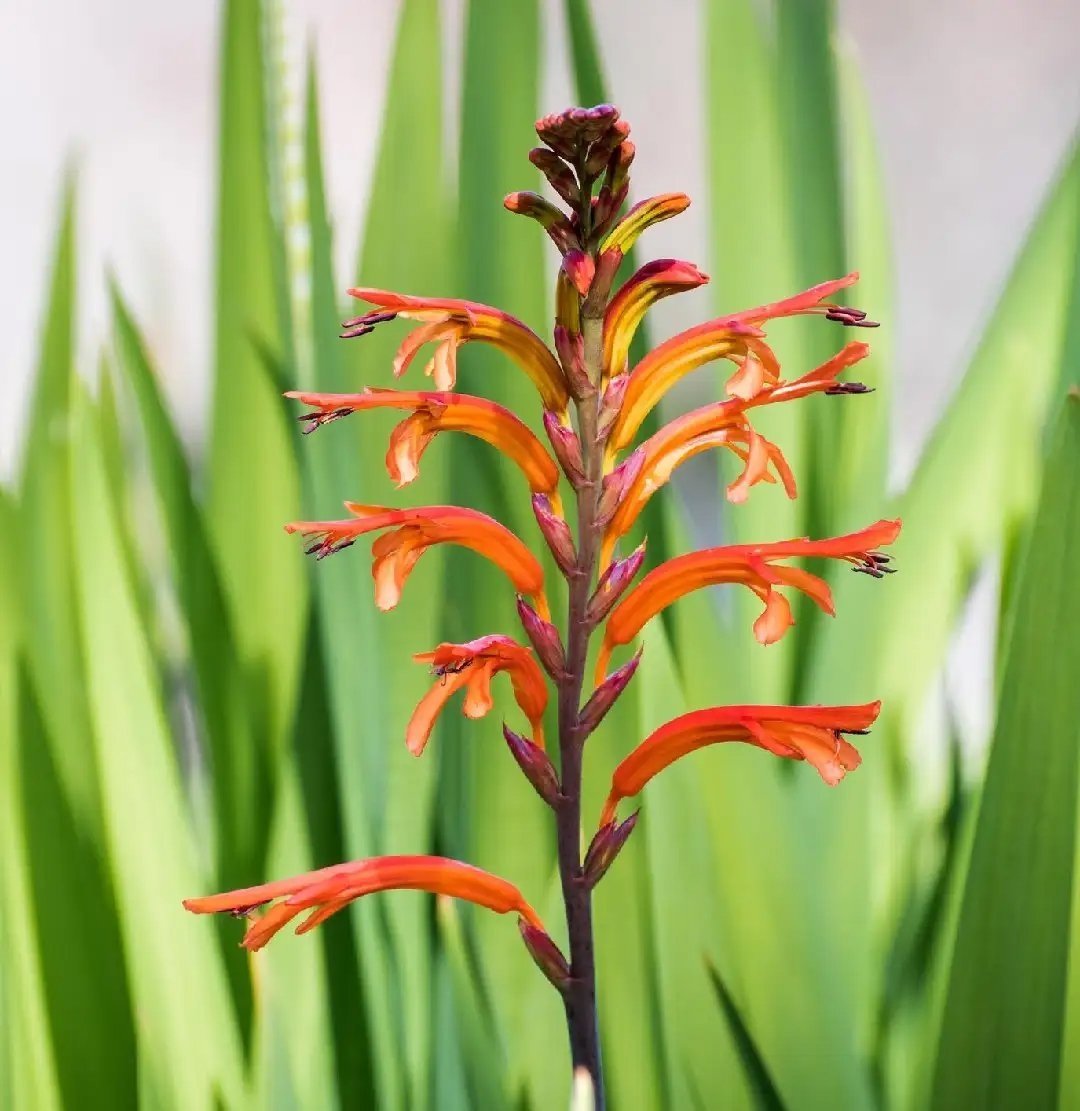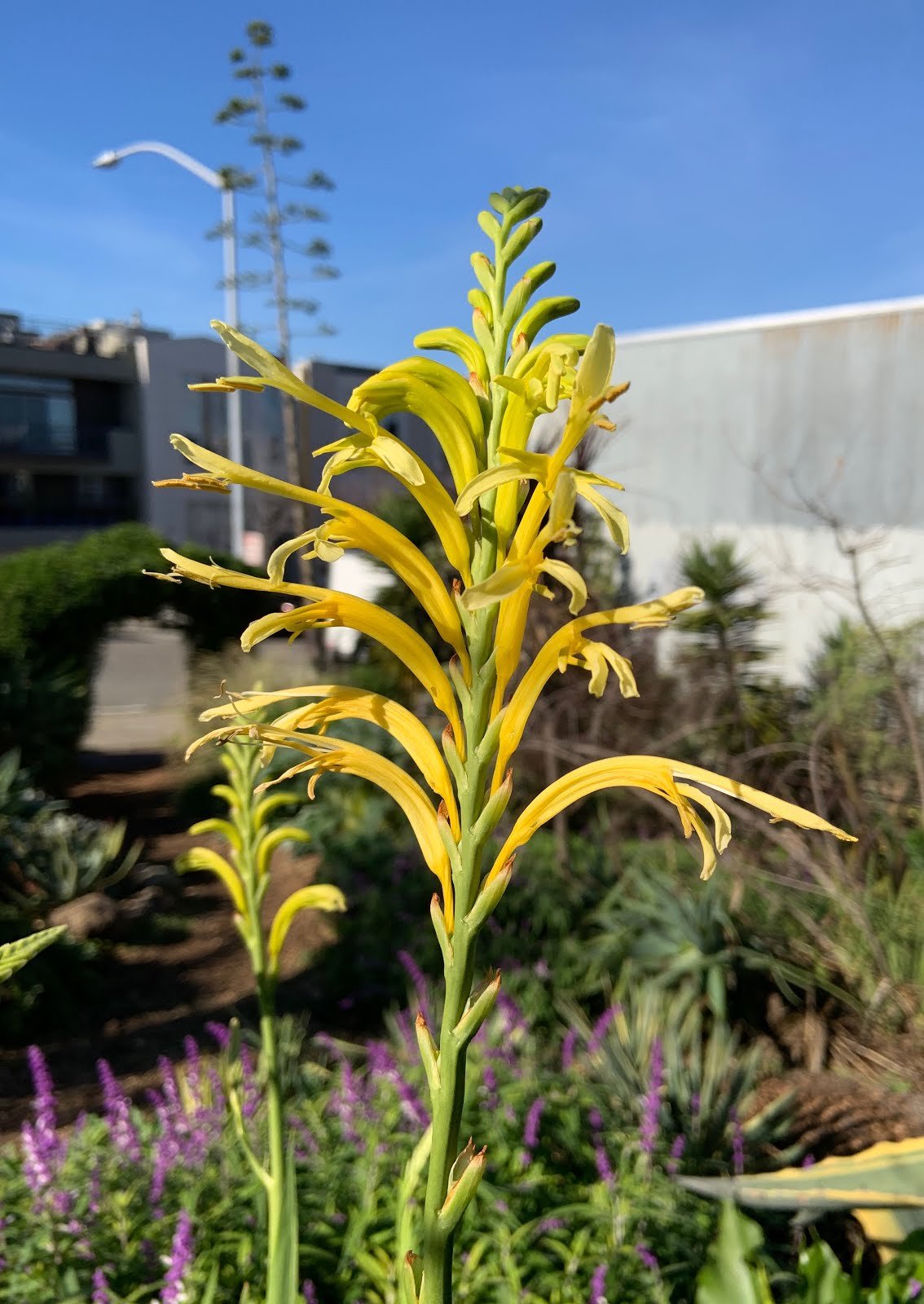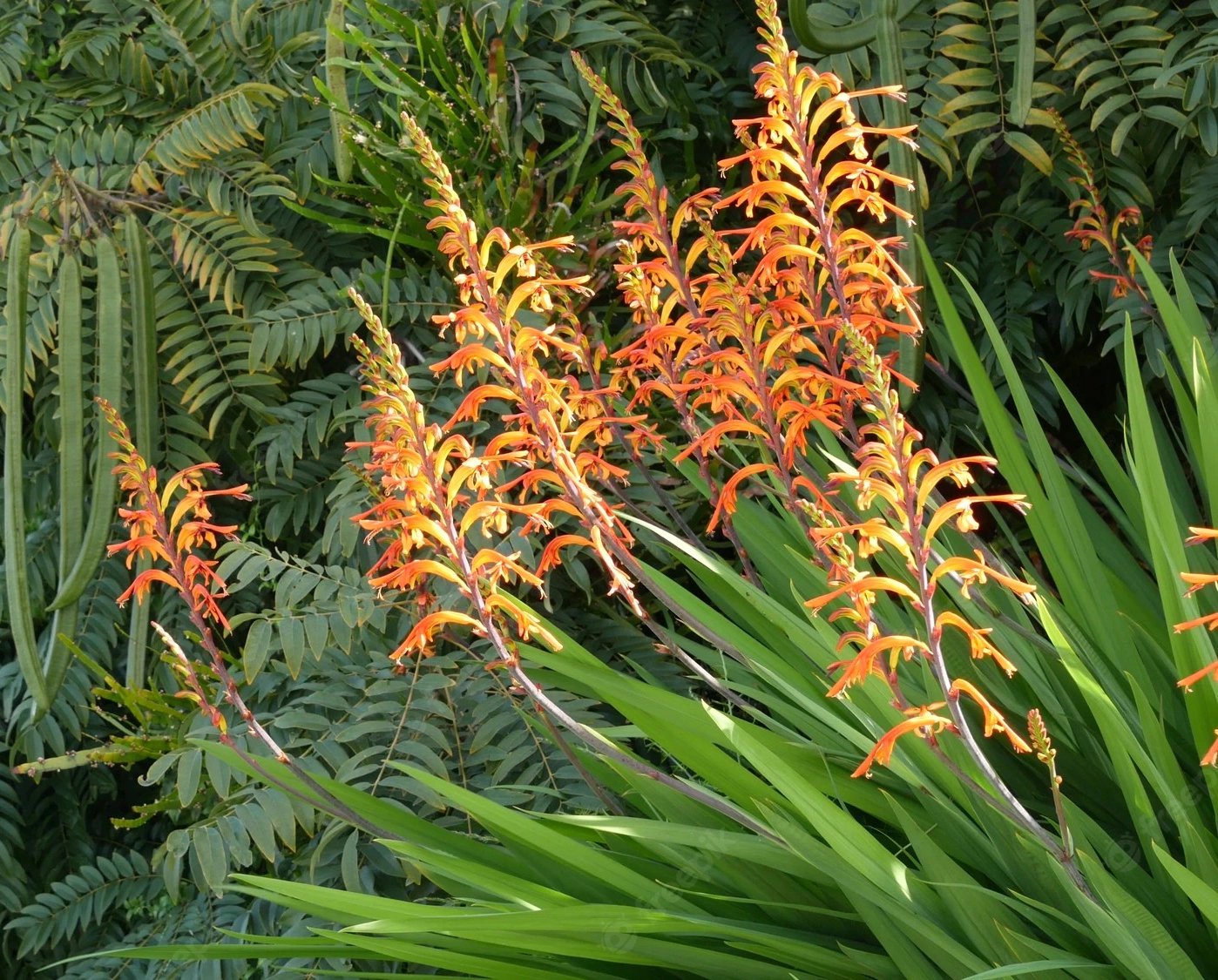Winter Flowering Plants For Your Dry Garden
By Annie
“In the depths of winter, I finally learned that within me there lay an invincible summer.” - Albert Camus
Just like old Camus, during the winter months, when so many garden plants are taking a rest or going dormant, it is wonderful to have plants in the dry garden that burst into bloom to give you a reminder of the warmth of summer. We’ve rounded up a few of the most reliable, tough, and easy to grow plants that flower in mid winter in this area.
Winter flowering aloes
Many South African aloes flower in the winter as there’s less competition for their local pollinators - sunbirds. Here in the Bay Area we don't have sunbirds but we do have hummingbirds, so to keep your hummers happy through winter, plant a few of the species that put on a show now.
Aloe arborescens - this aloe creates a large shrub over 6’ x 6’ with lots of orange-red flower spikes, but try the yellow flowering version for something different, or the really showy variegated version.
Aloe rubroviolacea - this one’s actually from the mountains of Yemen and Saudi Arabia on the Arabian Peninsula, but never mind that: its leaves change from blue-green to a violet shade in winter, and paired with its peachy flower it’s a real knockout.
Aloe speciosa - this single stemmed aloe eventually grows to 10’ tall, with slender, curving leaves and a striking red and white flower in winter.
Aloe ferox - another single stemmed aloe that slowly grows to about 10’ tall, this one has a candelabra of red-orange flowers that will stop traffic.
Aloe vanbalenii - this octopus-like stemless aloe grows to 3’ wide, with long, twisting leaves that, with enough sun, turn bright red. In late winter single spikes of yellow to orange flowers emerge.
CULTIVATION TIPS
Sun or shade: Full sun to light shade in hotter areas
Soil needs: Fertile to average, well-drained
Water needs: Occasional water in hot areas, otherwise none
Hardiness: Zones 9-11
Also tolerates: Light shade, hot inland summers, deer
Grevilleas
With lacy, fern-like foliage and the most gorgeous, elegant flowers that range from pale yellow to vibrant red, Grevilleas are a great bet for a winter show. One we like in particular is Grevillea ‘Moonlight’ with its elegant pale yellow flowers, which start with our first rains in the Bay Area.
A large fast-growing upright shrub or small tree up to 12’ high x 8’ wide, it can handle regular shearing or even a hard prune. Plant in a well-drained soil in full or part sun and feel free to take cut flowers into the house to enjoy - just stick the stems in warm water immediately to help them last.
Grevillea rosemarinifolia (Rosemary Grevillea) is another tough plant that blooms in winter, and also sporadically throughout the year. With reddish-pink and cream flowers, its leaves look like those of its namesake rosemary, and the plant grows up to 5’-8’ tall and wide. It’s very adaptable to heat and dry conditions - just make sure it has well draining soil.
Lastly, Grevillea ‘Peaches and Cream’ is similar to “Moonlight” except the flowers show a lovely graduation from peach to, well… cream!
CULTIVATION TIPS
Sun or shade: Full sun
Soil needs: Fertile to average, well-drained
Water needs: Occasional water in hot areas, otherwise none
Hardiness: Zones 9-11
Also tolerates: Light shade, hot inland summers
Narcissus papyraceus and N. tazetta (Paperwhites)
Heavenly-scented Narcissus flowers (both Narcissus papyraceus and N. tazetta) are so delicate and regal that you wouldn’t believe how tough they are. After their late winter flowering, they die back and can be ignored completely after that: unlike in areas where the ground stays moist, here their dormant bulbs are safe from rot in our dry summer ground.
Re-emerging next winter to delight you again, they’re gopher proof and deer proof, and will multiply over time to give more flowers. When your clumps of bulbs get congested, dig them up and divide after the leaves have died back so you can create new groups elsewhere, or share bulbs with friends.
CULTIVATION TIPS
Sun or shade: Full sun
Soil needs: Fertile to average, well-drained
Water needs: Moderate when growing, none when dormant
Hardiness: Zones 8-11
Also tolerates: Light shade, hot inland summers
Chasmanthe floribunda (Cobra Lily)
This indestructible South African native is a welcome sight in mid winter, when our rains cause its fresh green leaves to start growing in 3-5’ tall stands, quickly followed by elegant bright orange (or yellow if you grow C. floribunda var. duckittii) blooms. It grows from corms that live close to the surface of the soil, and groups of them will expand to make big clumps. It also seeds around, though not aggressively, and is extremely drought tolerant, popping up every year without fail to make winter a lot more bearable. Cut it back to the ground when the leaves die off in late spring - the dry leaves make great mulch.
CULTIVATION TIPS
Sun or shade: Full sun
Soil needs: Fertile or poor, well-drained
Water needs: Moderate when growing, none when dormant
Hardiness: Zones 9-11
Also tolerates: Part shade, summer water, cool coastal summers, wind, hot inland summers
Dahlia imperialis (Tree dahlia)
Q: What’s 15’ tall and covered in sprays of 6” wide lavender-pink flowers in mid winter? A: The tree dahlia! Never heard of it? Well you might want to look for one, because it’s the most surreal thing. For most of the year this Central American beauty is dormant, then it throws out massive shoots and grows at a great pace to reach flowering height, blooms madly, then disappears again until next year. Despite being frost sensitive, I vote for saving a space in the back of a bed for this one - well worth the effort it might take to find one.
CULTIVATION TIPS
Sun or shade: Sun or light shade
Soil needs: Well-drained
Water needs: Moderate when growing, none when dormant
Hardiness: Zones 8a-10b
Also tolerates: Part shade, cool coastal summers
Acacia baileyana purpurea
Winter flowering trees can be an amazing thing, but this one is a stunner. Acacia baileyana purpurea has fine, lacy foliage that’s a grayish purple shade, but in winter it flowers and wow - suddenly they’re completely covered in tiny, fluffy bright yellow balls. Wow.
On top of that it’s an extremely drought tolerant evergreen tree, fast growing to about 20’ tall with low litter. It makes a great street tree in the Bay Area, as well as a great garden tree.
Sun or shade: Sun
Soil needs: Well-drained
Water needs: Seasonal rain should be enough once established
Hardiness: Zones 8a-10b
Also tolerates: Part shade, cool coastal summers, poor soil



















